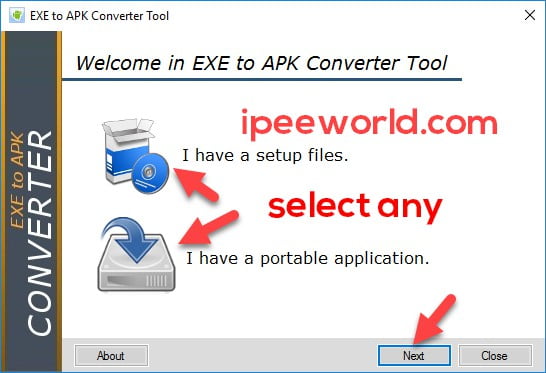
- #Change my software apk apk
- #Change my software apk install
- #Change my software apk android
- #Change my software apk free
#Change my software apk install
To install one of the supported Linux distributions using Linux Deploy, launch the app, and tap the Properties button.
#Change my software apk free
Both are capable open source apps available free of charge. Although several terminal emulator and VNC client apps are available in the Google Play Store, you can’t go wrong with VX ConnectBot and MultiVNC.
#Change my software apk android
The good news is that Linux Deploy hides all the gory technical details behind a user-friendly interface, so you don’t need to know all the nitty-gritty to be able to install and run Linux on your rooted Android device.īefore you proceed with installing Linux on Android using Linux Deploy, you need to install two additional apps on your device: a terminal emulator and a VNC client. In other words, chroot creates an isolated environment that doesn’t interfere with the rest of the system. Because the root directory is the top of the filesystem hierarchy, applications running in the chroot environment don’t access directories higher up than the root directory. This open source app offers an easy way to install and run a supported Linux distribution in a chroot environment, which is basically a special directory that acts as a temporary root directory. When it comes to installing Linux on a rooted Android device, one option is Linux Deploy. However, plenty of rooting guides are available online to help you along the way.

The exact rooting procedure depends on your particular Android device, and it can be tricky at times. In this case, you should consider installing a regular Linux distribution, but to do this, you must root your Android device first. If you install rsync, for example, you can use this powerful and flexible tool to back up files on your Android device to a remote server, and thanks to the supplied SSH server, you can access your Android device via an SSH connection.Īlthough KBOX offers a straightforward way to install Linux on an Android device, you might find it too limited for your needs. Obviously, KBOX is not a replacement for a full-blown Linux distribution, but it can be useful in certain situations. To install, for example, the rsync package, grab it from the project’s website and use the following command: dpkg -i /sdcard/Download/rsync_3.0.8_b Installing packages on KBOX is done using the dpkg tool. Rsync can act both as a client and server. A handful of other packages are available as separate downloads, including vim and rsync. KBOX comes with an assortment of BusyBox utilities ( find, grep, tar, vi, etc.), an SSH server and client, and the scp tool. By the way, the author of KBOX provides not only the ready-to-use package but also some technical descriptions of KBOX’s inner workings.
#Change my software apk apk
KBOX is not available in the Google Play Store, so you have to download the APK package from the project’s website and install it manually. This miniature single-user Linux distribution is integrated directly into a terminal emulator, and it can be installed on non-rooted Android devices (Figure 1). If you don’t find this idea all that appealing, then you might appreciate KBOX. In many cases, installing Linux on Android usually means going through the rigmarole of rooting the Android system with the risk of bricking your Android device.

Figure 1: KBOX is a miniature Linux distribution that doesn’t require rooting.


 0 kommentar(er)
0 kommentar(er)
